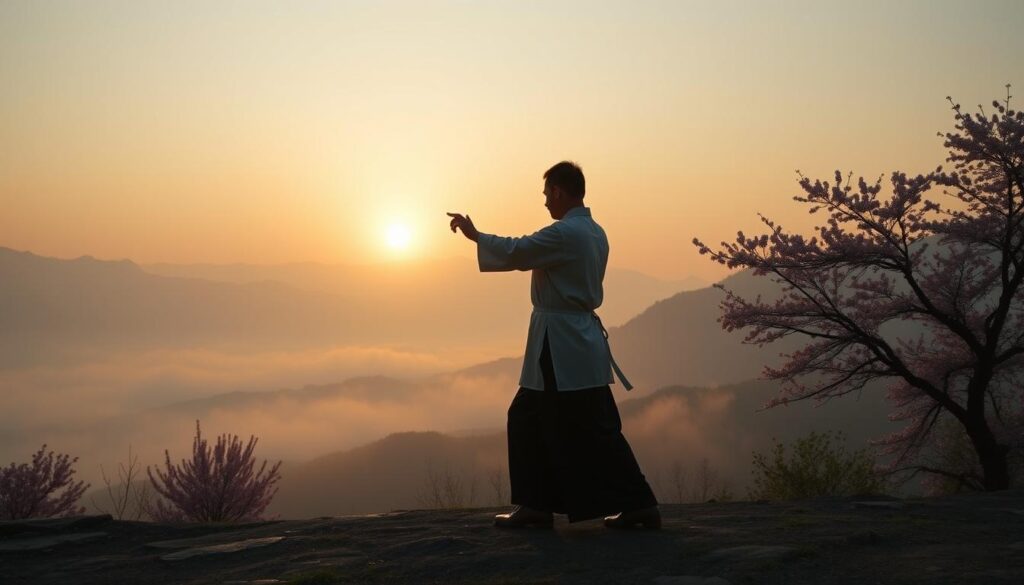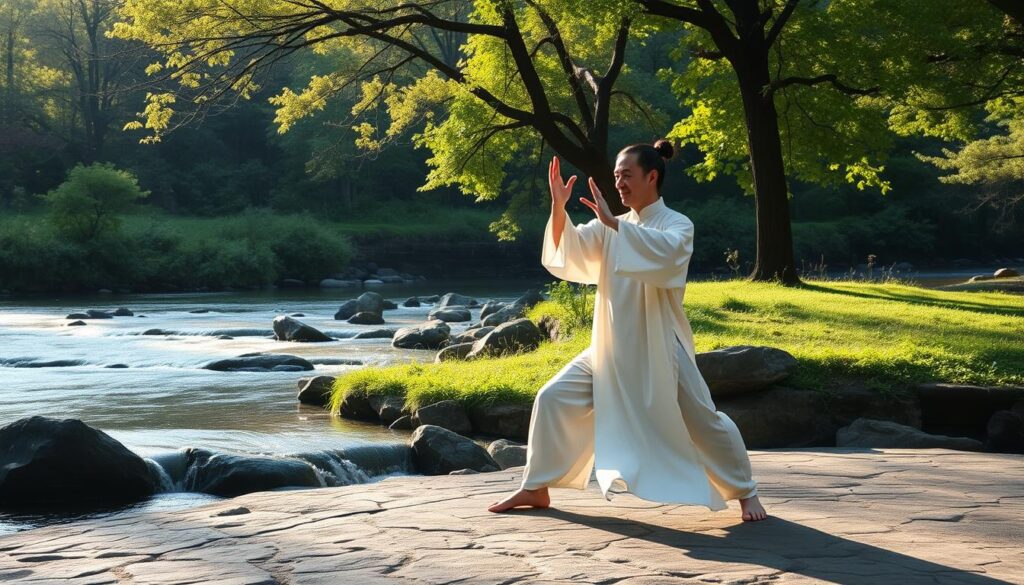The Taoist monk Zhang Sanfeng is believed to have founded Tai Chi Chuan, although many scholars debate whether he was simply a legend or an actual person. Scholars even debate the time period of his life. Some believe that he lived and founded Tai Chi in the 12th century (when Neo-Confucian principles spread among intellectuals), others say the 16th century, but the most popular consensus is that he was born around 1391 and died around 1459.
Legend has it that Sanfeng had a vision of a snake battling a crane. The movements of the snake and crane, evading and countering one another, led him to develop the Thirteen Movements, which are composed of eight postures and five attitudes.
The eight postures include:
1. Pull
2. Push
3. Ward-off
4. Split
5. Press
6. Rollback
7. Shoulder strike
8. Elbow strike
The five attitudes include:
1. Retreat
2. Advance
3. Central equilibrium
4. Look right
5. Gaze left
Many people claim that Zhang Sanfeng was fictionally created to tie Tai Chi to a historical figure and give credibility to the practice today. Others insist that he was a real person. Since the evidence does not exist to confirm or deny the theory, this controversy is likely to continue for ages to come.
The Coining of the Term “Tai Chi Chuan”
Scholars say that Wang Zongyue was the student of Zhang Sanfeng, although there is little-to-no verifiable evidence of his existence. Zongyue elaborated on Sanfeng’s Thirteen Movements by combining them into a series of continuous movements, which is the foundation of Tai Chi, as we know it today. Zongyue is said to be the author of Salt Shop Manuals, one of the classics of Tai Chi, which is the first piece of literature to reference the term “Tai Chi Chuan.”
Wang Zongyue had a student named Chiang Fa who is believed to have delivered the practice to the Chen village in the province of Henan, where the Chen family adopted the art and helped spread the practice for many generations.
The Chen Family
Chen Wanting, who lived from 1580 to 1660, was a General during the Ming Dynasty and the first person to be historically tied to Tai Chi through verified evidence.
When the Ming Dynasty fell, Wanting retired from the military and settled at home, becoming an avid practitioner of Tai Chi Chuan. Many believe that the art originated from him, that he used his military experience and his study of Chinese martial arts to develop the practice.
Regardless of who originated it, Wanting developed the practice into five smaller series of movements, a “Long Fist” routine with 108 movements and a “Cannon Fist” routine.
From Chen Wanting, the art was adopted by future Chen generations, most notably Chen Youheng, Chen Changxing and Chen Youben. Chen Changxing is the most well-known because he was the first to teach the art to someone outside of the family, namely, Yang Luchan. Legend has it that Yang Luchan was an experienced and successful martial artist who challenged a member of the Chen family to a fight and was sorely defeated. After fervently training for a year and challenging the same Chen family member to a fight, he once again lost.
Yang tried multiple times to gain admittance to the Chen family school but they rejected him as an outsider. Determined to learn the Chen family’s secret fighting style, Yang Luchan supposedly swallowed hot coals in order to become a mute. He then pretended to be a servant and snuck into the village, where he observed, and secretly practiced, the Chen’s fighting style for years. Chen Changxing uncovered Yang Luchan’s treachery, but instead of killing him, took on Luchan as his student. He saw an opportunity to revive the art, which his family members did not embrace as eagerly as previous generations. After becoming the victor in the Chen family tournament, the Chen family then allowed Yang Luchan to spread Tai Chi to other areas. He taught the art in Beijing, from where it took off and spread more publicly and eventually globally.



